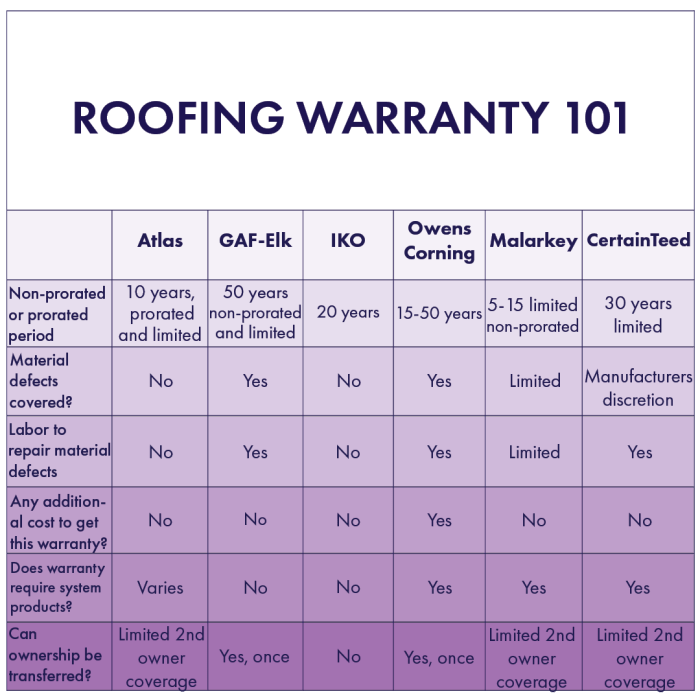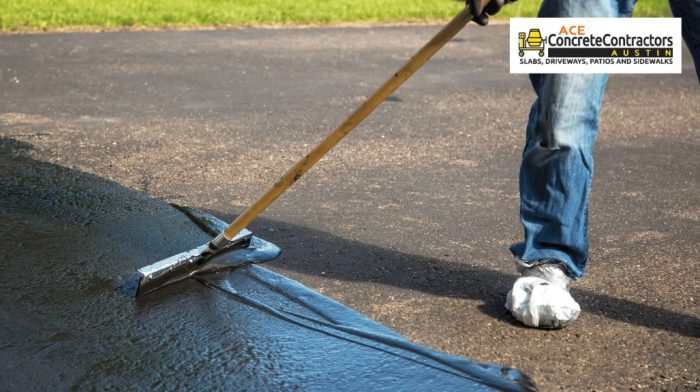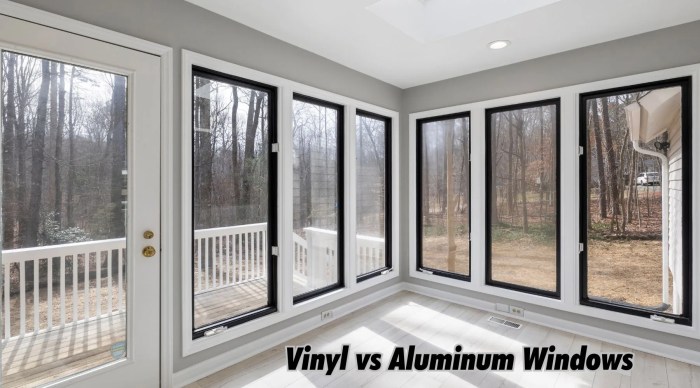Exploring the realm of roofing warranty options, this guide delves into the various types of warranties, coverage details, and the process of filing warranty claims. Whether you're a homeowner or a contractor, understanding the ins and outs of roofing warranties is crucial for ensuring long-term protection for your roof.
Types of Roofing Warranties
When it comes to roofing warranties, there are various options available in the market to provide homeowners with peace of mind and protection for their investment. Let's explore the different types of roofing warranties and understand the coverage they offer.
Manufacturer Warranties vs. Contractor Warranties
Manufacturer warranties are typically provided by the companies that produce the roofing materials. These warranties cover defects in the materials themselves and can range from 20 years to a lifetime, depending on the product. On the other hand, contractor warranties are offered by the roofing contractors and cover the workmanship of the installation.
These warranties usually last for a shorter period, such as 1 to 10 years.
Common Warranty Options
- Material Warranties: Material warranties cover defects in the roofing materials, such as shingle granule loss or cracking. These warranties are provided by the manufacturer and offer protection against premature failure of the materials.
- Workmanship Warranties: Workmanship warranties guarantee the quality of the installation work performed by the contractor. This warranty ensures that the roof is installed correctly and will function as intended. It is essential to have both material and workmanship warranties to have comprehensive coverage.
- Combined Warranties: Some roofing companies offer combined warranties that include both material and workmanship coverage in one package. These warranties provide homeowners with complete protection for their roof and peace of mind knowing that both the materials and installation are covered.
Length and Coverage of Warranties
Roofing warranties vary in length and coverage, depending on whether they are provided by manufacturers or contractors. Understanding the typical terms and conditions of these warranties is essential for homeowners looking to protect their investment in a new roof.
Length of Warranties
Manufacturers typically offer warranties that range from 20 to 50 years, with some premium products even providing lifetime coverage. On the other hand, contractor warranties usually last between 1 to 10 years. It's important to note that the length of the warranty does not necessarily indicate the quality or durability of the roof, so be sure to check the specific terms and conditions.
Coverage under Warranties
Roofing warranties typically cover defects in materials and workmanship, such as leaks, blow-offs, and ponding water. Some warranties may also include coverage for the cost of labor and disposal of old materials. It's important to carefully review what is included in the warranty to ensure you are fully protected.
Exclusions and Limitations
While roofing warranties provide valuable protection, it's crucial to be aware of any exclusions or limitations that may apply. Common exclusions include damage caused by natural disasters, improper installation, lack of maintenance, and acts of vandalism. Additionally, warranties may have limitations on transferring coverage to a new homeowner or require regular inspections to remain valid.
Transferability and Proration
When it comes to roofing warranties, understanding transferability and proration is crucial in making an informed decision on the best coverage for your needs.
Transferable Warranties
Transferable warranties are beneficial because they can be transferred to a new homeowner if you decide to sell your property. This adds value to your home and provides peace of mind to the new owner knowing that the roof is still under warranty.
Prorated Warranties
Prorated warranties work by decreasing coverage over time as the roof ages. The coverage amount decreases based on a specific formula, usually taking into account the age of the roof. While prorated warranties may offer initial full coverage, it's important to understand that the coverage diminishes as the years go by.
Importance of Understanding Transferability and Proration
When choosing a roofing warranty, it is essential to understand whether the warranty is transferable and how proration will impact the coverage over time. This knowledge can help you make a decision that aligns with your long-term plans for your property and ensures that you are fully aware of the warranty's terms and conditions.
Warranty Claim Process

When it comes to dealing with roofing issues covered under warranty, understanding the warranty claim process is crucial. Here, we will Artikel the steps involved in filing a warranty claim, provide tips on how to effectively navigate the process with manufacturers or contractors, and address common challenges homeowners may face and how to overcome them.
Filing a Warranty Claim
- Contact the manufacturer or contractor: Reach out to the company responsible for the warranty coverage as soon as you notice an issue with your roof. Provide details about the problem and any supporting documentation.
- Schedule an inspection: The manufacturer or contractor may schedule an inspection to assess the issue and determine if it falls under the warranty coverage.
- Documentation: Keep records of all communication, inspection reports, and any other relevant documents related to the warranty claim.
- Approval and repair: If the claim is approved, the manufacturer or contractor will proceed with the necessary repairs or replacement as per the terms of the warranty.
- Follow-up: After the repairs are completed, follow up with the company to ensure the work was done satisfactorily and that the issue has been resolved.
Tips for Navigating the Warranty Claim Process
- Read the warranty terms: Familiarize yourself with the details of the warranty coverage to understand what is included and excluded.
- Act promptly: Address roofing issues as soon as they arise to prevent them from worsening and to expedite the warranty claim process.
- Communicate clearly: Provide detailed information about the problem and maintain open communication with the manufacturer or contractor throughout the process.
- Document everything: Keep a record of all interactions, inspections, and repairs to ensure a smooth and efficient resolution of the warranty claim.
Common Challenges and Solutions
- Denial of claim: If your claim is denied, review the warranty terms to understand the reason for denial and consider appealing the decision with additional evidence.
- Delay in processing: If there are delays in processing your claim, follow up with the company regularly and escalate the issue if necessary to expedite the resolution.
- Poor workmanship: If you are not satisfied with the quality of the repairs, communicate your concerns to the manufacturer or contractor and request a reevaluation or additional work if needed.
Last Recap

In conclusion, navigating the world of roofing warranty options can be complex yet essential. By choosing the right warranty type, understanding coverage lengths, and being aware of transferability nuances, you can make informed decisions to safeguard your roof investment.
FAQ Guide
What are the benefits of transferable warranties?
Transferable warranties can add value to your home by providing coverage that can be passed on to future owners, making the property more attractive in the real estate market.
Are there any common exclusions in roofing warranties?
Some common exclusions in roofing warranties include damage from natural disasters, improper installation, and lack of regular maintenance.
How long do manufacturer warranties typically last?
Manufacturer warranties for roofing materials usually range from 20 to 50 years, depending on the type of material and the manufacturer.
What steps are involved in filing a warranty claim for roofing issues?
The process typically involves documenting the issue, contacting the manufacturer or contractor, providing proof of purchase, and scheduling an inspection.








